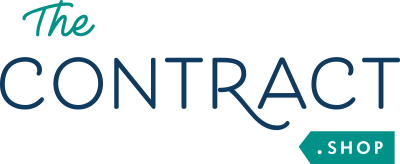Your Cart is Empty
Shop confidently - 14-day no-hassle return policy
Shop confidently - 14-day no-hassle return policy
Shop confidently - 14-day no-hassle return policy
So, you’re looking to become a coach but when you look up how that process works and what are the steps in the coaching process, you end up with more questions than answers. What does a session look like? How does the onboarding process work? What happens within a session? And contracts - How do those come into play?!
The business coaching process involves collaboration, introspection and action. Which means that there’s not always a simple pathway forward. However, there are 7 main steps you’ll want to follow in order to give your clients the best possible experience working with you. Some of these steps will happen concurrently, but all are important so let’s run down what those are.
Before you can even begin coaching a client, you’ve got to have an initial meeting with them to see if they would be a good fit for working with you. While this might seem like an unnecessary step in the actual coaching process, it’s actually extremely important. If you don’t set your coaching relationship up for success from the very beginning, your clients won’t see the results you’re both expecting them to see. Often, this can happen due to miscommunication, but it also can happen simply because you didn’t take the time to assess whether someone was a good fit for your coaching package.
During this initial consultation, there are a few things you’ll want to be sure that you cover:
Once your lead decides they’d like to move forward with working with you (and you with them), it’s time to onboard them. Similar to the initial consultation and assessment step, this step is extremely important in setting a strong foundation for your coaching relationship to come.
A few steps that you’ll want to be sure to cover within the onboarding process are:
Once you’ve onboarded your client, it’s time to work together to create an action plan for your time together. This action plan not only gives both of you clear objectives to work towards, but it also will give you a way to measure progress and the success of your time together.
When you and your new client are working to create your action plan, be sure to cover these 5 steps:
Now that you have a clear plan, it’s time to get to work! This is where the bulk of your work with your client comes into play. And thanks to your diligence in steps one through three, you’ll be able to enter this step of the process feeling confident and ready.
Depending on your own coaching process, you’ll probably want to cover the following during your regular sessions with your clients:
This is such an important part of the coaching process that we felt like it needed to be it’s own step so that it didn’t get lost in the shuffle. However, this step will be happening concurrently alongside step four. When you’re working with your clients, life is going to happen. As they leave each session, they’ll have the best of intentions for doing the work you assigned them. Then, life will get busy, business will become overwhelming, and they’ll find themselves back at your next session without any progress having been made.
This is a normal part of the coaching process, and it doesn’t say anything about you as a coach. However, your ability to adapt and revise will say a lot about you as a coach. Be sure to take time each session (and possibly even between sessions!) to review and revise your action plan based on evolving needs and circumstances. And again, this is an ongoing process throughout your time with clients.
Another concurrent, but extremely important, step in the coaching process is celebration. It’s highly likely that your clients will see the negatives much more than they will the positives. It’s your job as their coach to point out the progress they’re making so that they see it. Be sure to acknowledge and celebrate the milestones you created together back in step three, but also be prepared to celebrate the smaller victories that you’re seeing as well. This will go a long way towards boosting your clients’ motivation and confidence to keep doing the work - even when things feel hard.
The last of the steps in the coaching process is the transitioning process. This step occurs at the end of your time together with your clients, and essentially creates two paths forward for you and said client.
First, you’ll review progress and evaluate success of your time together. Then, you’ll discuss whether or not your client is ready to move forward independently, or if they’d like to continue with ongoing support. Which means you’ll either go back to step three, and create a new action plan for the next set of time together, or you’ll offboard the client.
Here’s a quick rundown of what the offboarding process looks like:
And with that, you know what are the seven steps of the coaching process! Want to ensure you’re not only protecting your business but also serving your clients well? We have a great group of contract templates specifically for coaches that will ensure you’re protecting your business, and also your clients!
Amanda Warfield is a simplicity-focused content marketing and launch strategist, author of the book Chasing Simple Marketing, and host of Chasing Simple - a podcast to help creative entrepreneurs uncomplicate their marketing and business. She traded in her classroom lesson plans for speaking and educating creative entrepreneurs on sustainably fitting content marketing into their business, without it taking over their business - so that they have time to grow their business.
Comments will be approved before showing up.
